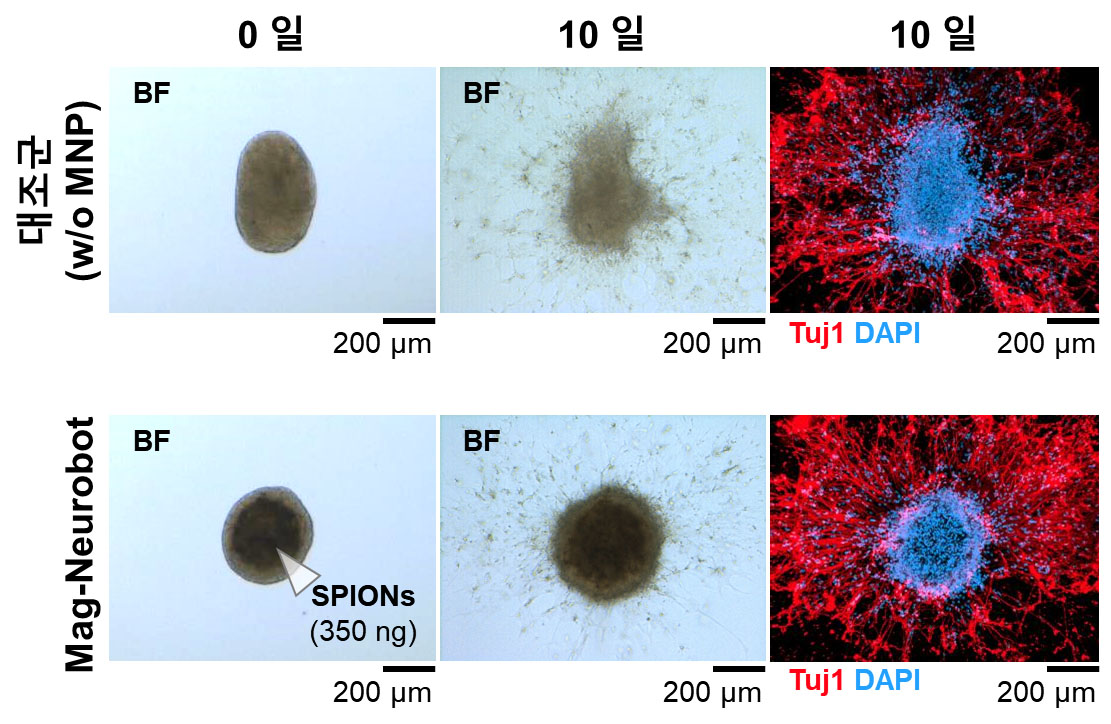| Mar 31, 2023 |
Can we connect to a virtual world like in the movie 'The Matrix'?
(Nanowerk News) A research team led by Professor Hongsoo Choi from DGIST's Department of Robotics and Mechatronics Engineering has collaborated with Dr. Jongcheol Rah's team from the Korea Brain Research Institute to develop a microrobot capable of forming neural networks and sectioning hippocampal tissues in an in vitro environment during cell delivery and transplantation.
|
|
This breakthrough could have significant applications in neural networks, cell therapy products, and regenerative medicine.
|
|
The findings have been published in (Advanced Materials, "A neurospheroid-based microrobot for targeted neural connections in a hippocampal slice").
|
 |
| Results of newly developed magnetic nerve microrobot (Mag-Neurobot)'s neuroprotic culture cell staining. (Image: DGIST)
|
|
Cell therapy products and cell delivery technology have been developed to regenerate nerve cells damaged by diseases. In recent years, microrobots that enable precise, minimally invasive cell delivery have gained recognition. Previous studies using microrobots for cell delivery and neural network connections only verified structural and functional connections at the cell level. However, Professor Choi's team has developed microrobots that can be practically applied to neural network connections.
|
|
The team conducted an experiment using the brain tissue of a laboratory mouse, demonstrating that the microrobot could analyze neural networks functionally connected in an ex vivo environment and enable cell delivery. They first fabricated a Mag-Neurobot by attaching superparamagnetic iron oxide nanoparticles to the principal nerve cells of the mouse's hippocampus in a three-dimensional spherical form. By attaching magnetic nanoparticles to the outside of the robot, it could be moved to a desired location by reacting to external magnetic fields. Safety was also verified through a biocompatibility test, confirming that the robot's magnetism did not affect the growth of nerve cells.
|
|
By controlling the magnetic field, the research team placed the microrobot in the mouse's hippocampus tissue section. They observed that the cells in the microrobot and the cells in the hippocampus tissue section were structurally connected through neurites using immunofluorescence staining.
|
|
The team then used a microelectrode array (MEA) to stimulate the nerve cells in the microrobot and determined that the nerve cells delivered by the microrobot exhibited typical electrophysiological characteristics. They verified that electric signals were propagated through the nerve cells within the hippocampus tissue section, confirming that the nerve cells delivered by the microrobot could functionally form cells and neural networks inside the tissue section.
|
|
Dr. Choi stated, "We have proven that a microrobot and nerve tissues of a mouse brain can be functionally connected through an electrophysiological analysis." He added that the technology developed in this study is expected to be utilized for verifying precisely targeted treatments in neurological disorder and cell therapy fields. This groundbreaking research brings us closer to understanding how we might eventually connect to virtual worlds like those depicted in "The Matrix" through the use of microrobot technology.
|

